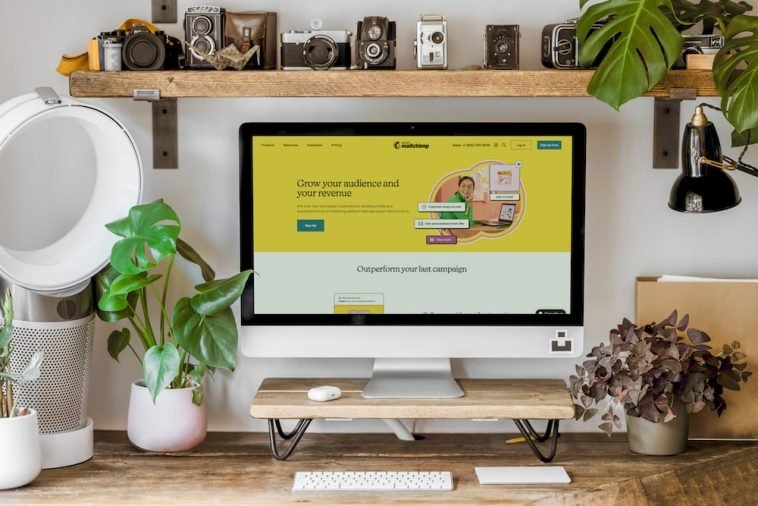Introduction.
If you’re thinking about starting an online store, Shopify has probably come up on your radar. It’s one of the most popular eCommerce platforms out there, and for good reason: it’s user-friendly, customizable, and comes packed with features that help you turn your online business ideas into reality without needing a ton of technical knowledge.
But how exactly do you get a Shopify store up and running? And more importantly, is it the right fit for you?
In this guide, I’ll walk you through the essentials of setting up a Shopify store, from understanding its core benefits to tackling any potential downsides.
We’ll go through each stage of the setup process in plain language, covering what you need to know to make the most out of this platform.
Why Shopify Matters in eCommerce
With the online retail industry booming, eCommerce platforms like Shopify have become incredibly valuable for entrepreneurs.
Shopify makes it easy to manage product listings, handle payments, and even market your products, all in one place.
Its intuitive interface means that you don’t need a lot of technical skills to create a professional-looking online store, which is why it’s so popular among both beginners and seasoned eCommerce pros.
But Shopify is more than just easy to use. The platform gives you access to powerful tools for analytics, marketing, and inventory management that allow you to grow your business without a hitch.
And with its mobile-friendly themes and integrations with major social media channels, Shopify makes it easy for your store to look good and perform well on any device.
How Do I Create a Shopify Store For Your Ecommerce Business?
1. Sign Up for Shopify.
First things first: head over to Shopify’s website and sign up. You’ll get a free trial to test the waters, which is perfect if you want to see if it’s right for you. During this stage, Shopify will ask for some basic info like your email, password, and store name.
2. Choose Your Store Theme.
Shopify offers both free and paid themes that you can customize to reflect your brand’s personality. The theme you choose will set the tone for your site’s design, so spend a little time browsing through the options. Shopify’s themes are mobile-responsive, so they’ll look great on any device.
3. Add Your Products.
This is where the magic happens. In the “Products” section, you’ll be able to add all the items you plan to sell, along with descriptions, prices, and high-quality images.
Make sure to write clear, appealing product descriptions and upload images that truly represent your products—this will help your customers feel confident about buying from you.
4. Set Up Payments.
Shopify offers multiple ways for you to get paid, from credit card payments to PayPal. You can even use Shopify Payments, which eliminates transaction fees and streamlines the payment process for your customers. Be sure to choose the payment methods that best suit your target audience.
5. Organize Shipping Settings.
If you’re selling physical products, you’ll need to set up shipping options. Shopify lets you offer flat rates, real-time shipping rates, or free shipping, and you can adjust these options based on customer location.
6. Configure Your Domain.
While Shopify gives you a basic myshopify.com domain, it’s a good idea to get a custom domain (e.g., mystore.com) for a more professional look.
You can buy a domain directly through Shopify or connect one you’ve already purchased from a domain provider like GoDaddy or Namecheap.
7. Launch and Market Your Store.
Once everything looks good and you’re ready to start selling, it’s time to launch! Shopify provides a range of marketing tools to help you spread the word, including integrations with Google Analytics and Facebook Ads.
You can also take advantage of Shopify’s email marketing and SEO features to drive traffic to your store.
Pros and Cons of Using Shopify
Like any platform, Shopify has its strengths and weaknesses. Here’s a quick breakdown to help you decide if it’s the right choice for your business.
Pros:
- Ease of Use: Shopify’s user-friendly interface makes it simple to set up and manage your store.
- Scalability: As your business grows, Shopify offers various plans and features to support you.
- Reliable Customer Support: Shopify provides 24/7 support, so you’re never alone if issues come up.
- Extensive App Ecosystem: Shopify’s App Store has thousands of integrations, making it easy to customize your store with add-ons like loyalty programs, email marketing tools, and more.
Cons:
- Monthly Fees and Transaction Costs: Shopify isn’t free, and depending on your plan, fees can add up, especially if you use third-party payment processors.
- Customization Limits on Lower Plans: While there’s plenty of customization available, more advanced design options require higher-tier plans or coding knowledge.
- Learning Curve for Advanced Features: Shopify’s basic features are straightforward, but more complex options like SEO and analytics might require some learning if you’re new to eCommerce.
FAQs
Q: Is Shopify only for physical products?
No, Shopify works for digital products and services too. If you’re selling downloadable content (like eBooks, courses, or art), Shopify has options to help you deliver these securely to your customers.
Q: Can I use Shopify with my existing website?
Yes, Shopify has an option called “Buy Button” that allows you to add a shopping cart to any existing website or blog. This way, you can sell your products without creating an entire Shopify store from scratch.
Q: Do I need a business license to sell on Shopify?
This depends on your location and what you’re selling. While Shopify doesn’t require you to have a business license, some countries and cities do. Be sure to check local regulations to stay compliant.
Q: How much does it cost to set up a Shopify store?
Shopify offers various pricing plans starting at $39 per month. This basic plan includes most of the features you’ll need to run a small store.
As your business grows, you might want to upgrade to get additional features, such as advanced reporting and better shipping rates.
Q: What’s the best way to drive traffic to my Shopify store?
Start by optimizing your store for SEO, using social media marketing, and creating targeted ad campaigns. Shopify has tools to help with SEO, and its app integrations can make social media advertising easier to manage.
Q: Can I sell in multiple currencies on Shopify?
Yes! Shopify’s multi-currency features let you set prices in various currencies, which is a great option if you have international customers.
Final Thoughts.
Setting up a Shopify store can be an exciting step for anyone looking to dive into eCommerce. Shopify’s ease of use, flexibility, and robust support make it one of the best platforms out there.
However, it’s essential to weigh both the benefits and limitations, especially if you’re on a budget or need very specific customization.
If you’re ready to bring your online business ideas to life, Shopify is a fantastic platform to help you reach your goals.
So, are you ready to give it a try and see what Shopify can do for your eCommerce vision?





GIPHY App Key not set. Please check settings